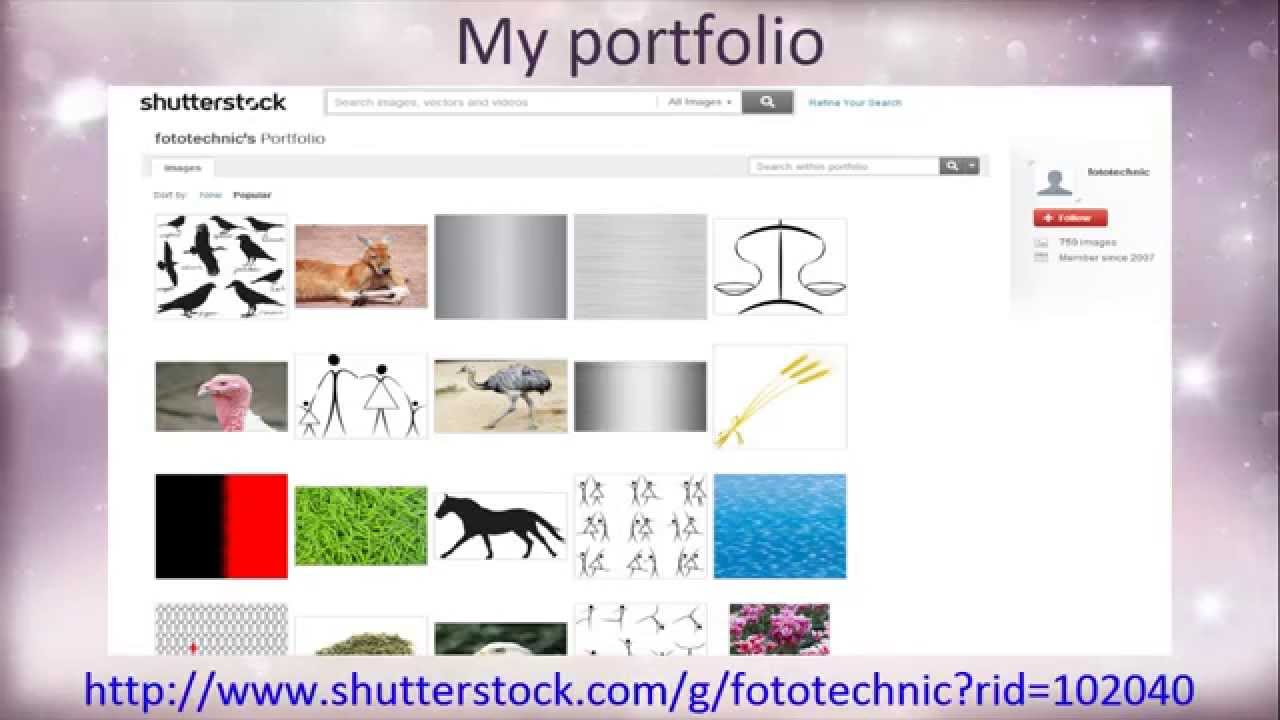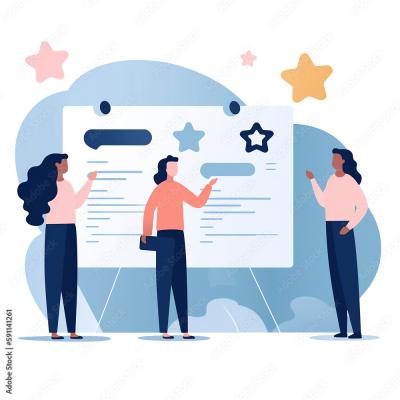When you’re diving into creative projects, having access to high-quality visuals is a game-changer. That’s where Shutterstock comes in. It’s one of the most popular stock image platforms out there, offering a vast library of photos, videos, vectors, and illustrations. Whether you’re designing a website, creating marketing materials, or working on a client project, Shutterstock provides a treasure trove of resources to bring your ideas to life. The platform is user-friendly and packed with tools to help you find the perfect visuals quickly. In this guide, we’ll explore how to make the most of
Understanding Shutterstock Licensing Options

Before you start downloading and using images from Shutterstock, it’s crucial to understand the licensing options available. Shutterstock offers primarily two types of licenses: Standard and Enhanced. Knowing the difference helps you stay compliant and ensures your project’s legal safety.
Standard License
The Standard license is suitable for most common uses like websites, social media, presentations, and print materials up to 500,000 copies. It covers:
- Web and digital use
- Print runs up to 500,000 copies
- Advertising and promotional materials
However, it doesn’t allow for:
- Use in merchandise or products for resale
- Use in templates or items that are redistributed
- Use in projects that require more than 500,000 copies
Enhanced License
The Enhanced license is designed for high-impact projects or those with broader distribution. It includes everything in the Standard license but with added rights, such as:
- Unlimited copies and impressions
- Use in merchandise for resale (like T-shirts, mugs)
- Use in templates for multiple end products
- Increased legal protection for your project
Choosing the right license depends on your project scope. If you’re unsure, it’s safer to opt for the Enhanced license for larger campaigns or commercial products. Always read the license agreements carefully, as misuse can lead to legal issues. Shutterstock also offers options for editorial images, which are typically used for news and commentary with different licensing rules. Understanding these options helps you use Shutterstock files confidently and legally for your professional projects.
Steps to Download and Access Shutterstock Files

Getting started with Shutterstock files is pretty straightforward, but it helps to know the exact steps so you can access your assets quickly and efficiently. Whether you’re a seasoned designer or just diving into digital projects, here’s a simple guide to help you navigate the download process.
Step 1: Sign In or Create an Account
First things first, you need to have an account on Shutterstock. If you already have one, just sign in. If not, signing up is free, and you can choose a subscription plan or purchase on-demand images depending on your needs. Having an account allows you to manage your downloads and licenses easily.
Step 2: Search for Your Files
Use the search bar to find the images, vectors, videos, or music files you need. You can filter results by type, orientation, color, size, and other options to narrow down your choices. Once you find a file that catches your eye, click on it for more details.
Step 3: Purchase or Download a Preview
Most Shutterstock files are available for purchase, but you can also download free previews—these are watermarked and meant for review purposes only. To get a high-resolution, licensed version, you’ll need to add the file to your cart and complete the purchase or download your subscription credits.
| Action | Description |
|---|---|
| Click “Add to Cart” | Select the files you want and add them to your cart for purchase or subscription credit use. |
| Proceed to Checkout | Follow the prompts to review your selection, choose your licensing options, and complete the payment process. |
| Download the Files | Once purchased, go to your account dashboard, find your downloads, and click the download button. Files will be saved to your default downloads folder. |
Step 4: Manage Your Files
After downloading, you can access your files through your Shutterstock account. They are stored in your downloads folder unless you specify otherwise. For easier access during projects, organize your assets into folders on your computer or cloud storage.
Tip: Keep track of your licenses and download history in your account dashboard. This makes it simple to verify usage rights and re-download assets if needed.
Best Practices for Incorporating Shutterstock Files into Your Projects
Using Shutterstock files effectively can elevate your projects, but doing so thoughtfully is key. Here are some best practices to help you incorporate these assets seamlessly and ethically into your work.
1. Always Use Licensed Files Correctly
Remember, every Shutterstock file comes with licensing restrictions. Whether it’s a standard or enhanced license, make sure you understand what’s allowed—be it for commercial use, print, web, or social media. Avoid using files in ways that go beyond your license terms to stay compliant and avoid legal issues.
2. Customize and Personalize Assets
Don’t just slap a Shutterstock image into your project as-is. Instead, tweak it to fit your style. Resize, crop, adjust colors, add overlays, or combine it with other elements. Personalizing assets makes your project unique and helps avoid the risk of your work looking too generic or overused.
3. Maintain Consistency in Style
If you’re working on a branding project, aim for consistency. Choose Shutterstock files that match your color palette and overall aesthetic. Using a cohesive visual style ensures your project looks polished and professional.
4. Optimize Files for Different Platforms
Depending on where your project will be published, optimize your Shutterstock assets accordingly. For example:
- Use lower-resolution images for web to improve load times.
- Create high-resolution images for print materials.
- Resize and format videos to match platform specifications, like Instagram or YouTube.
5. Credit When Necessary
While Shutterstock licenses usually don’t require attribution for most projects, it’s good practice—especially in editorial or educational contexts—to credit the source when possible. It shows respect for content creators and maintains transparency.
6. Keep Organized Records
Maintain a clear record of your Shutterstock licenses and downloads. This helps if you need to verify usage rights later or if you’re working with a team, ensuring everyone is on the same page about what assets are licensed and how they can be used.
By following these best practices, you’ll maximize the value of Shutterstock assets while ensuring your projects remain professional, legal, and uniquely yours. Happy designing!
Tips for Ensuring Proper Attribution and Compliance
When you’re diving into Shutterstock files for your projects, making sure you’re giving proper credit and staying compliant isn’t just a good practice — it’s essential. Not only does this protect you legally, but it also respects the creators who put their time and effort into those assets. Here are some practical tips to keep you on the right track:
- Read the License Agreement Carefully: Before downloading or using any Shutterstock file, always take a few minutes to review the license terms. Different licenses (Standard vs. Enhanced) have varying requirements, especially around attribution and usage rights.
- Keep Records of Your Downloads: Save your purchase receipts and license details. Having a well-organized record makes it easier to verify your rights if questions arise later.
- Provide Attribution When Required: If the license specifies attribution, include it clearly and correctly. Typically, this means mentioning the creator’s name and Shutterstock as the source. For example, “Image by John Doe from Shutterstock.”
- Follow Usage Restrictions: Some assets might have restrictions like not being used in sensitive contexts or not being altered beyond recognition. Always double-check these restrictions to avoid accidental violations.
- Use the Correct File Versions: Ensure you’re using the licensed version of the file for your project, especially if you’re combining multiple assets or making edits. This helps maintain compliance and avoids inadvertent misuse.
- Stay Updated on Licensing Changes: Shutterstock may update their licensing policies periodically. Subscribe to updates or check their website regularly to stay informed about any changes that could affect your usage.
By paying close attention to these tips, you’ll be able to confidently incorporate Shutterstock files into your projects without worrying about legal hiccups. Proper attribution not only keeps you compliant but also shows respect for the talented creators behind the assets you’re using.
Common Mistakes to Avoid When Using Shutterstock Files
Even seasoned designers and content creators can sometimes slip up when working with stock assets like Shutterstock files. Being aware of common pitfalls can save you from headaches down the road. Here are some mistakes to watch out for—and how to steer clear of them:
- Ignoring License Restrictions: One of the biggest errors is assuming all Shutterstock files can be used freely in any project. Always review the license details to understand what’s permitted and what’s not. Misusing assets can lead to legal trouble.
- Failing to Provide Proper Attribution: If the license requires attribution, neglecting to include it can breach the agreement. This can result in fines or the need to replace the asset, which can be time-consuming and costly.
- Using Images Beyond Their Allowed Scope: For example, using a Standard license image for a large print campaign or merchandise might be prohibited. Make sure your usage aligns with the license type.
- Downloading and Using Outdated or Unlicensed Files: Sometimes, users accidentally use files from unofficial sources or outdated versions. Always download directly from Shutterstock and verify your license status.
- Over-Editing or Altering Assets Beyond Allowed Limits: Some licenses restrict significant modifications or require attribution if altered. Read the license to see what’s acceptable and avoid making changes that violate these terms.
- Not Keeping Proof of Licensing: In case of disputes, having clear records of your licenses and purchases can be a lifesaver. Always save receipts, license certificates, and download confirmations.
- Trying to Resell Shutterstock Files: Shutterstock licenses typically prohibit reselling the files as standalone products. Using assets within your projects is fine, but reselling them is a big no-no.
By being mindful of these common mistakes, you’ll not only protect yourself legally but also maintain a professional reputation. It’s all about respecting the work of creators and ensuring your projects stay compliant and ethical. Remember, a little extra diligence goes a long way in making your creative process smoother and more reliable.
Enhancing Your Projects with Shutterstock Images and Videos
Now that you’re familiar with how to find and download the perfect Shutterstock files, it’s time to talk about making your projects stand out. Using high-quality images and videos can truly elevate your work, whether you’re creating a website, a presentation, or marketing materials.
First off, choose the right media for your project. Consider the message you want to convey. For example, if you’re designing a website for a wellness brand, vibrant images of nature or happy people can evoke positive feelings. On the other hand, sleek, modern videos might be better suited for a tech startup.
Here are some tips for enhancing your projects:
- Use images and videos as focal points: Place striking visuals prominently to grab attention immediately.
- Maintain consistency: Stick to a color palette or style to keep your project cohesive. Shutterstock offers collections and curated sets to help with this.
- Incorporate overlays and text: Adding overlays or text on images can help communicate your message clearly. Just ensure readability by choosing contrasting colors.
- Optimize for different platforms: Resize and compress images and videos to ensure fast load times, especially for web projects.
Another fun trick is to combine Shutterstock videos with your own footage or animations. This mix can add a professional touch and make your content more engaging. For instance, overlaying a Shutterstock background video with your own narration or branding elements can create a polished, cinematic feel.
Remember, editing is key. You don’t have to use Shutterstock files exactly as they are. Use editing tools like Adobe Photoshop, Premiere Pro, or even free options like Canva or DaVinci Resolve to tweak colors, crop images, or add effects. This customization ensures your project feels unique and tailored to your brand.
Finally, always keep the end-user experience in mind. High-quality visuals should complement your content and not overwhelm it. Balance is essential—use striking images and videos to highlight your message without distracting from the core information.
Conclusion and Additional Resources for Professional Use
Using Shutterstock files in your professional projects can be a game-changer. From finding the perfect image to enhancing your visuals creatively, Shutterstock provides a vast library that helps elevate your work to a professional level. Remember, the key to success is choosing the right media, customizing it to fit your project’s style, and ensuring it resonates with your audience.
As you continue exploring Shutterstock, here are some additional resources that can help you sharpen your skills and make the most of your licenses:
- Shutterstock Tutorials: The official blog and YouTube channel offer tutorials on best practices for image editing, video production, and using their platform efficiently.
- Creative Software Guides: Tutorials for tools like Adobe Photoshop, Premiere Pro, Canva, and others can help you learn how to customize Shutterstock assets professionally.
- Design Inspiration Websites: Platforms like Behance, Dribbble, or Pinterest can inspire your visual projects and help you see how others incorporate professional stock assets.
- Online Courses: Websites like Skillshare, Udemy, or LinkedIn Learning offer courses on graphic design, video editing, and branding—many of which include modules on using stock media effectively.
Remember, the goal is to create compelling, high-quality projects that communicate your message clearly and beautifully. With Shutterstock’s extensive library and a little creativity, you’ve got everything you need to produce professional work that leaves a lasting impression. Happy creating!


